-
收藏模板
- 模板信息
- 更新时间:2023-09-08
- 字数:约40563字
- 页数:约33页
- 格式:.doc
- 推荐版本:Office2016及以上版本
- 售价:5 金币
您可能喜欢的文档
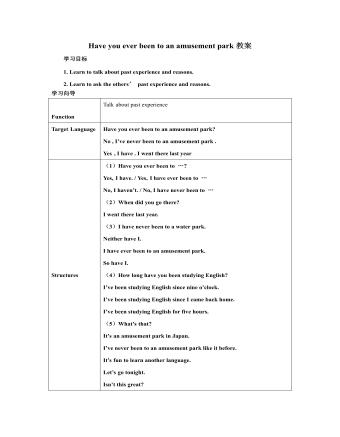
人教版新目标初中英语八年级下册Have you ever been to an amusement park教案
(1)Have you ever been to …? Yes, I have. / Yes, I have ever been to …No, I haven’t. / No, I have never been to …(2)When did you go there? I went there last year. (3)I have never been to a water park. Neither have I. I have ever been to an amusement park. So have I. (4)How long have you been studying English? I’ve been studying English since nine o’clock. I’ve been studying English since I came back home. I’ve been studying English for five hours. (5)What’s that? It’s an amusement park in Japan. I’ve never been to an amusement park like it before. It’s fun to learn another language. Let’s go tonight. Isn’t this great?space museum, amusement park, water park, South America, Peru, Holland, European culture, tour guide, flight attendant, musical instrument, more than, be from, get to, take lessons, neither, discover, graduate, change

人教版新目标初中英语八年级下册Have you ever been to an amusement park说课稿7篇
1. 教材的地位及作用:本单元围绕谈论过去的经历,学习使用现在完成时态。通过对学生们喜闻乐见的一些娱乐场所(fun places)的描述,反复运用句型Have you ever been to…? I’ve never been to…. 来激发他们使用本单元所学单词的兴趣。教材中提供的所有活动都以现在完成时态为中心,通过一系列的听、说、读、写的训练,来加深对现在完成时态的理解,明白英汉两种在结构及表达方法的一些异同点。从而提高他们运用所学语言的综合能力。2. 教材的结构本单元分Section A 和Section B 两部分。Section A 中通过所设计的各项任务呈现了两篇听力课文和一篇阅读理解。Section B则安排了一篇听力和两篇小短文,用以加强对目标语言的理解。Self Check 部分是用来检查学生对本单元所学目标语言的综合运用能力。单元后的语篇训练旨在通过目标语言培养学生的阅读理解能力,掌握一些基本的阅读技巧。3. 教学目标(知识目标、能力目标、情感目标)
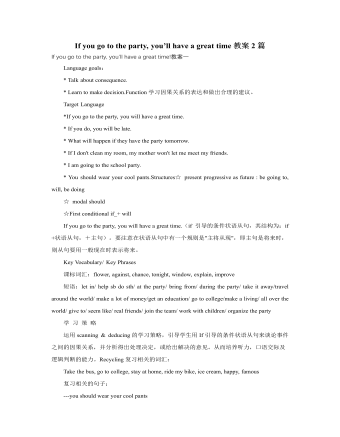
人教版新目标初中英语八年级下册If you go to the party, you’ll have a great time教案2篇
区分宾语从句、定于从句和状语从句宾语从句和状语从句,都叫做主从复合句。宾语从句主要是中考必考的,是初中阶段必掌握的从句,宾语从句主要是掌握三要素,所谓宾语从句,就是宾语在主从复合句当中充当宾语的一个句子,叫做宾语从句。主句的谓语动词是及物动词,后面如果是词或者是短语的话,是简单句,如果是句子的话,肯定是宾语从句。I know that he good at English.就是宾语从句,三要素,一要素是要注意连词,连词一共学了三类连词,一类连词是that口语当中可以省略,就像刚才说的那一句,I hear he is good at English.还有疑问代词、疑问副词,how where when,疑问代词、疑问副词。还有一类连词weather是否的意思,不是状语从句当中的如果,这一定要和如果区分开,这是是否。I don't know if he interested at English。宾语从句要注意if是连词。第二要素是语序,要用陈述举语序。比如说你家有几口人,我们都说How many people are there in you family?但是这是简单句,一旦说成宾语从句,你可以告诉我你家有几口人吗?Could you tell me how many people there are in you family ?
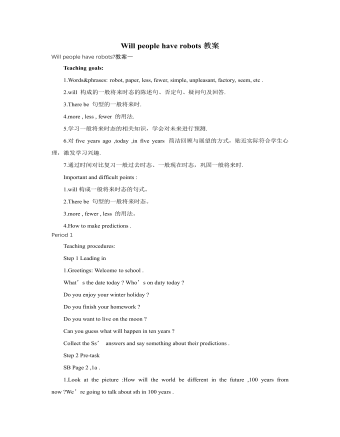
人教版新目标初中英语八年级下册Will people have robots教案
Teaching goals:1.Words&phrases: robot, paper, less, fewer, simple, unpleasant, factory, seem, etc .2.will 构成的一般将来时态的陈述句、否定句、疑问句及回答.3.There be 句型的一般将来时.4.more , less , fewer 的用法.5.学习一般将来时态的相关知识,学会对未来进行预测.6.对five years ago ,today ,in five years 简洁回顾与展望的方式,贴近实际符合学生心理,激发学习兴趣.7.通过时间对比复习一般过去时态、一般现在时态,巩固一般将来时.Important and difficult points :1.will构成一般将来时态的句式。2.There be 句型的一般将来时态。3.more , fewer , less 的用法。4.How to make predictions .Period 1Teaching procedures:Step 1 Leading in1.Greetings: Welcome to school .What’s the date today ? Who’s on duty today ?Do you enjoy your winter holiday ?Do you finish your homework ?Do you want to live on the moon ?Can you guess what will happen in ten years ?Collect the Ss’ answers and say something about their predictions .Step 2 Pre-taskSB Page 2 ,1a .1.Look at the picture :How will the world be different in the future ,100 years from now ?We’re going to talk about sth in 100 years .
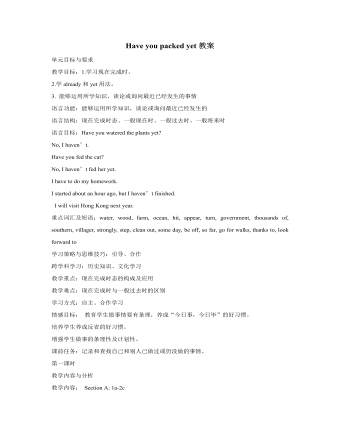
人教版新目标初中英语九年级下册Have you packed yet教案
教学目标:1.学习现在完成时。2.学already和yet用法。3. 能够运用所学知识,谈论或询问最近已经发生的事情语言功能:能够运用所学知识,谈论或询问最近已经发生的语言结构:现在完成时态、一般现在时、一般过去时、一般将来时语言目标:Have you watered the plants yet?No, I haven’t.Have you fed the cat?No, I haven’t fed her yet.I have to do my homework. I started about an hour ago, but I haven’t finished. I will visit Hong Kong next year.重点词汇及短语:water, wood, farm, ocean, hit, appear, turn, government, thousands of, southern, villager, strongly, step, clean out, some day, be off, so far, go for walks, thanks to, look forward to学习策略与思维技巧:引导、合作跨学科学习:历史知识、文化学习教学重点:现在完成时态的构成及应用教学难点:现在完成时与一般过去时的区别 学习方式:自主、合作学习 情感目标: 教育学生做事情要有条理,养成“今日事,今日毕”的好习惯。培养学生养成反省的好习惯。增强学生做事的条理性及计划性。课前任务:记录和查找自己和别人已做过或仍没做的事情。
- 查看更多相关Word文档
How long have you been collecting shells教案2篇
How long have you beencollecting shells?教案一
第一课时
一、学习目标
1.学会谈论自己对某些爱好持续的时间长度。
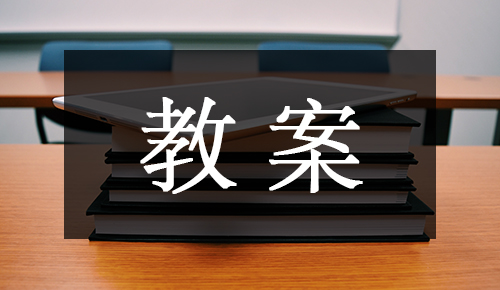
如:过去有什么爱好,持续了多长时间,目前有什么爱好,这个爱好到目前持续了多长时间。
2.学会就上述问题向别人进行询问。
3.通过谈论自己有什么收藏爱好,持续了多长时间,有多少收藏品,学会for和since的用法。
4.学会就上述问题向别人进行询问。
二、学习内容
目标分类学习内容
词
汇 collect, shell, skate, inline, inline skating,marathon, since, a pair of, raise, several, snow globe, monster, probable, runout of, store, particularly, polar bear, let know, collector, by the way,bamboo, silk, common, topic, be interested in
语法句型
I.如何表示“从过去开始一直持续到现在,有可能还要持续下去的动作”。我们用下面的句式来表示这一概念:
主语 + have / has been + 现在分词,如:
1.She has been skating for four hours.
到现在为止她滑冰已经有四个小时了。
2.I have been collecting stamps since I was tenyears old.
我从十岁起就一直在集邮。
II.如果想询问别人“做一件事有多久了?”,我们用“How long have/ has +主语 + 现在分词?”这样的句式来提问,如:
1.How long have you been studying English?
你学英语有多久了?
2.How long has your father been working in thecompany?
你父亲在这个公司工作有多长时间了?
III.学会“since”和“for”在表示时间时的用法。
IV.区分“主语 + have / has been + 现在分词”和“主语 + 动词过去式”这两个句式的不同点及熟练掌握这两个句式的用法。
功能 Talk about how long you have been doing things
(谈论你做某件事情有多久了)
三、朗读单词
1. collect v. 收集, 聚集, 集中, 搜集
2. shell n. 贝壳, 壳, 外形, 炮弹
3. inline adj. 一列式的;排成行的
4. inline skating 纵列式滑冰
5. marathon n. [体]马拉松赛跑 (全长42,1954米)
6. a pair of 一对;一双;一副
7. raise v. 募集;筹措
8. several adj. 几个的,数个的
9. stamp n. 邮票, 印花, 印, 图章
10. globe n. 球体;球形玻璃器
11. snow globe 里面有雪花的球形玻璃器
12. monster n. 怪物, 妖怪
13. probably adv. 大概, 或许
14. run out of (储存物、供应品等)用尽;缺乏
15. store vt. 贮藏, 贮备, 存储
16. room n. 空间
17. particularly adv. 独特地, 显著地
18. polar adj. 北极的;南极的;近极点的
19. polar bear 北极熊
20. anyone pron. 任何人
21. let know 告知;使知晓
22. collector n. 收藏家,收集者;搜集者
23. by the way 顺便说一句
24. bamboo n. 竹子
25. silk n. 丝绸
26. common adj. 共同的;普通的;常见的
27. free adj. 自由的;物拘束的
28. topic n. 话题;主题;题目
29. be interested in 对……感应趣
四、任务示范
学生们正在进行马拉松滑冰比赛,比赛已经进行了一段时间,有些同学还在滑,有人已不滑了。请根据下面短文用“how long”编一个对话。
同学们在做这个练习时要注意如何询问别人“做一件事有多久了?”
The students are having an Inline SkatingMarathon. Alison has been staking for five hours. Victor has been skating forfive hours, too. But San skated for four hours. He is tired. He is sitting onthe ground and having a test. He has been having a rest for about one hour.
下面请听老师示范(Pairwork):
A: How long has Alison been skating?
B: He has been skating for five hours.
A: How long has Victor been skating?
B: He has been skating for five hours, too.
A: How long did San skate?
B: He skated for four hours.
A: How long has he been having a rest?
B: He has been having a rest for one hour.
好,我们再做一次,这次你可跟老师一起做。
五、布置作业
1.请同学们反复朗读单词,并自查能记住多少单词。
2.听录音:Section A 1b, 2a, 和2b
3.预习Section A 3a
附:听力原文
P44 1b
Woman: Alison, how long have you been skating?
Alison: I’ve been skating for five hours.
Woman: Wow! Sam, how long did you skate?
Sam: I skated for four hours. I started at nineo’clock in the morning and
stopped at one o’clock in the afternoon. I’m verytired!
Woman: When did you start skating, Victor?
Victor: At nine o’clock.
Woman: So you’ve been skating for …
Victor: I’ve been skating for five hours.
Woman: How long did you skate, Celia?
Celia: Umm, let’s see … I skated for two hours.
答案:
Alison: I’ve been skating for five hours.
Sam: I skated for hour hours.
Victor: I’ve been skating for five hours.
Celia: I skated for two hours
P45 2a, 2b
Reporter: Alison, congratulations on winning theskating marathon!
Alison: Thank you.
Reporter: So, how long did you skate today?
Alison: For six hours!
Reporter: Was this your first inline skatingmarathon?
Alison: No, I skated in a marathon last year.
Reporter: You’re an excellent skater, Alison. Doyou skate every day?
Alison: Yes, I do.
Reporter: How long have you been skating?
Alison: Since I was seven years old. I got myfirst pair of skates on my
birthday from my grandmother …
答案:
2a: The following questions should be checked: 1 34 6
2b: 1. c 3. a 4. b 6. d
How long have you been collecting shells? 第二课时
第二课时
一、任务示范及讲解
1.通过打电话的方式了解同学们有什么爱好(如:打篮球、弹钢琴、学英语等);这个爱好持续了多长时间?在过去某一个时间里是否做过这件事(如:昨天、前天、上个星期等等);做了多长时间?
Name Hobby How long (for) Time (past) How long(for)
完成任务所需要的语言结构:
1. What’s your name?
2. What is your hobby?
3. How long have you been playing basketball?
4. I have been playing basketball for about tenyears.
4. How long did you play it yesterday?
5. I played it for about two hours.
下面请听老师示范:
Name Hobby How long (for) Time (past) How long(for)
Wang Gang play football for five years yesterdayone hour
Li Hong dancing for seven years last Sunday twohours
Zhao Ming swimming for four years last week tenhours
2.让学生自述自己做某一件事的情况。如:
I have been studying dancing for about five years.I danced for about two hours last
Saturday. 等。
3.通过打电话对本班的同学作一个采访,询问他 / 她正在做什么?做了多久了?是否打算继续做下去?并请同学们汇报调查结果
完成任务所需要的语言结构:
1. What are you doing?
2. When did you do it?
3. How long have you been doing it?
4. How long did you do it?
下面请听老师示范:
A: What are you doing?
B: We are watching a new movie.
A: How long have you been watching it?
B: We have been watching it for about ten minutes.
4.同学们,为了丰富你们的课余生活,学校准备组织课外活动小组。在组织活动小组之前,学校要对你们的爱好进行调查,你们有些什么爱好呢?这些爱好从什么时候开始的?到现在持续了多久?
请同学们通过这个练习学会“since”和“for”在表示时间时的用法。请看下面的例句:
1.The skating marathon has been going for eighthours.
2.I have been collecting kites for seven years.
3.He has been watching English movies since 1998.
4.I have been listening to music videos since I wasseven years old.
通过以上例句我们可以看出for后面接的是一个时间段:eight hours和 seven years,而since后面接的是具体的时间点:1998 (1998年)、I was seven years old(我7岁)。
首先听老师的示范,……,下面请同学们自己完成表格。
Name Hobby How long
since
for
since
for
since
for
完成任务所需要的语言结构:
1. I have been doing it since I was ten years old.
2. I have been doing it for six years.
老师示范:
Name Hobby How long
Wu Qing running since I have been running since Iwas a child.
for I have been running for five years.
Li Qiang collect kites since I have beencollecting kites since I was eight.
for I have been collecting kites for about sixyeas.
二.布置作业
1.听力练习
Section B 2a, 2b
2.预习Section B 3a
附:听力原文
P47 2a, 2b
Conversation 1
Girl: How long have you been collecting thesekites, Bob?
Bob: Since I was ten years old.
Girl: How many do you have?
Bob: Oh, I have about 22 so far.
Girl: Where do you fly them?
Bob: I usually fly them in the park when it’swindy.
Conversation 2
Boy: Wow, Marcia. Are these stuffed animals allyours?
Marcia: Yes, I’ve been collecting them for fiveyears.
Boy: How many do you have?
Marcia: Well, I have about 35.
Boy: Which ones do you like best?
Marcia: I like the panda best – he’s so cute! AndI also like the tiger. My
mother gave me that one.
Conversation 3
Girl: What do you collect, Liam?
Liam: I collect theater and movie tickets.
Girl: So how long have you been collecting them?
Liam: Since last year.
Girl: How many do you have?
Liam: I have 20. I put them in this book and writeif I liked the show or movie.
Girl: Looks like an interesting collection.
答案:
2a: Bob: kites
Marcia: stuffed animals
Liam: theater and movie tickets
2b: Bob: since he was ten years old, 22
Marcia: for five years, 35
How long have you been collecting shells? 第三课时
任务示范及讲解学生们说一说自己的hobby或收藏。
内容可以包括:What ? How long? When started?
Whether continue or not? 这项活动主要起复习和引导作用。
完成任务所需要的词汇:
stamp(邮票)、shell(贝壳)、model car(模型汽车)、 coin(钱币)、 kite(风筝)、 theaterticket(戏票)、stuffed animal(用海面、碎布等作填充材料的玩具动物)、 movie ticket
(电影票)
下面请听老师示范:
My name is Peter. I have been living in China forabout seven years. I like collecting stamps. I have been collecting Chinesestamps since I came to China. I have been collecting over three hundred Chinesestamps. I like Monkey King stamps best.
二.阅读预习与讲解
下面我们学习两篇小短文P 46 Section A 3a和P 48 Section B 3a。在你们读之前先由老师解释一下本文中出现的一些短语,以便易于你们学习。
Section A 3a
1. raise money for charity 为慈善机构慕钱
eg. We had a party to raise money for the doctorsand nurses last night.
昨天晚上我们举行了一个为医务工作者慕钱的晚会。
2. whole 整个的
eg. I have been studying for the whole eight hourstoday.
今天我已经学习了整整八个小时了。
3. an hour ago 一小时以前
eg. I played football an hour ago.
一个小时以前我踢球了。
Section B 3a
1. thanks for doing sth 为(做)某事感谢某人
eg: Thanks for helping me study English.
谢谢你帮我学英语。
2. in fact 事实上
eg: In fact I like to study in school.
事实上我还是喜欢在学校学习。
3. run out of 用尽;缺乏
We’ve run out of room to store them 我们缺少储存它们(snow globes)的空间
4. If you know anyone else who collects them, … 如果你知道谁也(喜欢)收藏它们,……
这是一个由if引导的条件状语从句,if在这里解释为“如果……”,在这个状语从句中又含有一个由who连接的定语从句,who在这里指anyone。
三.布置作业
2.阅读Section A 3a的短文,并完成表格。
1.阅读Section B 3a并做3b。
How long have you been collecting shells? 第四课时
一.疑难解析
I.如何表示“从过去开始一直持续到现在,有可能还要持续下去的动作”。如:到现在为止她滑冰已经有四个小时了。又如:我从十岁起就一直在集邮。我们采用如下的方法来表示“从过去开始一直持续到现在,还要持续下去的动作”:
主语 + have / has been + 现在分词,如:
1.She has been skating for four hours.
到现在为止她滑冰已经有四个小时了。
2.I have been collecting stamps since I was tenyears old.
我从十岁起就一直在集邮。
在这两个句子中,have和has是助动词,因此把助动词题签,就构成了一般疑问句,在have或has后面加not,就构成了否定形式,have not和has not可以分别缩写成haven’t和hasn’t 。如:
1.Have you been doing your homework since thismorning?
从今天早晨起你就一直在写作业吧?
(表明写作业这个动作从今天早晨就开始了,一直持续到现在,还要持续下去。)
2.I haven’t been seeing films for a long time.
我有很长时间没有看电影了。
(表明没有看电影这个动作从过去一直持续到现在,还要继续持续下去。)
II.区分“主语 + have / has been + 现在分词”和“主语 + 动词过去式”这两个句式的不同点及熟练掌握这两个句式的用法。
1.“主语 + have / has been + 现在分词”表示动作从过去开始一直持续到现在,并且还要继续持续下去。如:
He is a pianist. He has been playing the piano forabout twenty years.
他是一个钢琴家。他弹钢琴大约有二十年了。
弹钢琴这个动作从二十年前就开始了,一直持续到现在,由于他是个钢琴家,那么弹钢琴这个动作还要继续持续下去。这里强调持续,而不是二十年间他一刻不停地在弹琴。又如:
I have been collecting snow globes for sevenyears.
我收集里面有雪花的玻璃装饰品有七年了。
我有这个爱好,七年间我一直在收集这样的装饰品,但是不等于七年间我别的什么也没干。
2.“主语 + 动词的过去式”表式过去某个时间已经发生了动作,有比较明确的表示过去的时间状语。如:
I did my homework last night.
我昨天晚上做的作业。
表明“做作业”这个动作发生在昨天晚上,动作没有持续性。
二.写作指导
大家在学完这个单元以后要完成两个写作任务,即写一个招聘广告和一封应聘信。招聘广告可以模仿49页上的第3题来写,应聘信可参考第48页上的3a来写。
下面请看示例:
学校歌咏队要参加一个歌咏比赛,故而要招聘新成员,请你帮歌咏队写一个招聘广告。
应聘信
Dear Mike,
I’m from Class Two, Grade Two. I’m an outgoingboy. I am interested in singing songs. I have been singing songs since I wasfive years old. I have been studying English for six years, so I can sing manyEnglish songs. I am studying English songs now. Every Saturday I go to singingclub to study singing and English songs.
Yours sincerely
John
How long have you beencollecting shells?教案二
Period 1
1.KnowledgeObjects
(1)Key vocabulary: inline skating; marathon;skate; shell; collect
(2)Key structures: -How long have you beenskating?
-Ive been skating for five hours.
(3)Listening practice
2.Ability Object
To train students ability of listening andspeaking.
1. TeachingKey Points
Key vocabulary. Key structures. Listeningpractice.
2.Teaching Difficulties
How to improve students listening ability.
Pairwork.
How long have you been collecting shells?
A: How long has Alison been skating?
B: Shes been skating for five hours.
A: How long did Sam skate?
B: He skated for four hours.
时序教学操作过程设计(重点写怎么教及学法指导,含课练、作业安排)
Step Ⅰ Greet theclass and check the homework.
Step Ⅱ
Show the new words on the screen. Teach the newwords. Read the new words to students and ask students to repeat.
Step Ⅲ Section A
Draw a long horizontal line across the board. Say,This is called a time line. It shows the years from 19- to the present. Letsput some information about ourselves on the time line.
T: Maria, when did you start studying English?
S1:1997.
T: Maria started studying English in 1997.(Writethe words Maria started English above the date 1997 on the time line.)
In this unit were going to talk about how longweve been doing things. Maria, how long have you been studying English?
(Point to the date 1997 on the time line.)
S1:Since 1997.
T:(Look at the class.)Correct. Maria has beenstudying English since 1997.(Point to the starting date and run the fingeralong the years up to the present year.)Class repeat. Maria has been studyingEnglish since 1997.
Ss: Maria has been studying English since 1997.
Repeat the activity using different dates forseveral other students. Use a different situation, such as When did you startto ride a bicycle? or When did you start to baby-sit? if these questions aremore appropriate. Each time ask the class to repeat a sentence, point to thestarting date and run the finger along the years up to the present year.
Step Ⅳ 1a
This activity provides oral practice using thetarget language.
Go through the instructions with the class. Say,You will be talking with other students about some things you did in the last24 hours.
Write the words at and for on the blackboard. Say,You will be using the words at and for in some answers.
Divide the students into some groups. Let studentslook at the three questions and read them to the class.
(1)How long did you sleep last night?
(2)When did you start class today?
(3)How long have you been in class today?
Then get students to ask and answer thesequestions in groups. Let them look at the words at and for on the blackboard.Say, Use the two words in sentences like this: I started class at 10:00.I sleptfor ten hours.
While students work in groups, move around theroom checking their progress and offering help as needed.
Ask the class each question and let severaldifferent students answer. Help the students phrase responses using the wordsat and for correctly.
Step Ⅴ 1b
This activity gives students practice inunderstanding the target language in spoken conversation.
First tell students, Were going to listen to arecording of a reporter talking to the participants in an inline skatingmarathon.
Let students look at the picture and tell what ishappening. Help the students understand that the students in the picture are ata skating marathon. Then discuss with students what a marathon is.(Its acontest to see who can do something-run or dance or skate-the longest withoutstopping.)
Ask a student to read the instructions, and thename in the chart. Then say, You will write sentences about these peopleaccording to the recording.
Get a student to read the sample answers.
Ive been skating for five hours.
I skated for four hours.
T: What word comes before the number of hours?
S: For.
T: Thats right. We use the word for when we talkabout a number of hours. We say for five hours or for ten days.
Play the recording for the first time. This timestudents only listen. When play it a second time, say, This time listen to thetape carefully and write the sentences in the chart.
Correct the answers.
Answers
Alison: Ive been skating for five hours.
Sam: I skated for four hours.
Victor: Ive been skating for five hours.
Celia: I skated for two hours.
Step Ⅵ 1c Pairwork
This activity provides guided speaking andlistening practice using the target language.
Ask a student to read the instructions aloud. Andlet students look at the picture in Activity 1a.
Have two students read the example in sampledialogue in Activity 1c.
Then say, Now work with your partner. Begin withreading the conversation in the box with your partner. Then make a conversationabout the people in the picture. You can use the names and sentences inActivity 1b.Are you clear? OK. Begin, please.
As students work, move around the room, checkingtheir progress. Offer language support if necessary.
At the end ask several pairs of students to saytheir conversations to the class. Give them little presents if they do theirwork better.
Step Ⅶ Optional Activity
Write these words on the board in random order:how, long, have, you, been, studying, English, going to school, playing soccer,riding a bicycle. Then give a student a pointer and ask him or her to tap thewords one by one to make a question. For example the student might tap thesewords: how...long...have...you...been...riding...a...bicycle. Then the studentcalls on another
student to answer the question. Give severalstudents a chance to tap out questions.
Step Ⅷ Summary and Homework
Today weve learned some key vocabulary andstructures. Continue to make conversations with your partner after class. Nexttime Ill ask some pairs to read your conversations to the class again.
课题 How long have you been collecting shells? Period2
1.KnowledgeObjects
(1)Key vocabulary: since; pair; a pair of
(2)Key structures
Pairwork.
(3)Grammar focus
2.Ability Objects
To train students listening skill.
To train students communicative competence.
1.TeachingKey Points
Vocabulary and structures.
2.Teaching Difficulties
Groupwork
Grammar focus.
How longhave you been collecting shells?
A: How long have you been skating?
B: Ive been skating since I was seven years old.
A: How long have you been skating?
B: Ive been skating since nine oclock.
A: How long did you skate?
B: I skated for two hours
时序教学操作过程设计(重点写怎么教及学法指导,含课练、作业安排)
Step Ⅰ Greet theclass and check the homework.
Ask a pair of students to say their conversation.
S1:How long has Victor been skating?
S2:Hes been skating for five hours.
S1:How long did Celia skate?
S2:She skated for two hours.
T: Very good. Thank you.
Step Ⅱ
Show the new words on the screen. Read the newwords to the class and ask them to repeat. Make sure every student canunderstand the meanings of the new words.
since conj. 自……以后;自从
pair n. 一双;一对;一副
a pair of 一双;一对;一副
Step Ⅲ 2a
This activity gives students practice inunderstanding the target language in spoken conversation.
Go through the instructions with the class. Lookat the six questions and ask different students to read the questions to theclass. Then rephrase them in simple words. For example question 1 can berephrased as How many hours did you skate today? Ask students what questionsthey still dont understand and explain the questions further as needed.
Then say, Youll listen to a recording of areporter talking to Alison. Please check the questions you hear. The first oneis given to you as an example. Do you understand? OK. Lets listen to therecording now.
Play the recording the first time. Students onlylisten. Play it a second time. This time students put a check in front of thequestions they hear.
Then check the answers.
Answers
The following questions should be checked:1 3 4 6
Step Ⅳ 2b
This activity gives students practice inunderstanding the target language in spoken conversation.
Say, Listen to the interview with the inlineskating marathon winner again. Draw lines to match the questions and answers inActivity 2a.
First point out the line drawn for the sampleanswer. Ask a student to read the example.
-How long did you skate today?
-For six hours.
Get a student to read the other answers to theclass. Then say, You will use these answers to answer the questions you checkedin Activity 2a.
Play the recording and let students draw lines connectingeach question with the correct answer:
Play the recording again and have students checktheir answers.
Answers
1.c 3.a 4.b 6.d
Step Ⅴ 2c
This activity provides guided speaking andlistening practice using the target language.
In this activity first ask students to look at thepicture and ask, whats happening in the picture?(A reporter is interviewingthe skating marathon winner.)
Have two students to read the example in sampledialogue in Activity 2c.
A: How long have you been skating?
B: Ive been skating since I was seven years old.
Then say, You will work with your partner. Roleplay the interview between Alison and the reporter.
Let students work in pairs. When they work, movearound the room checking the progress of the pairs and offering help as needed.
At the end ask a pair of students to say theirconversation to the class.
Step Ⅵ Grammar Focus
Review the grammar box first. Divide the classinto two group. One group read the statements and the other the responses.
Group 1:How long have you been skating?
Group 2:Ive been skating since nice oclock.
Ive been skating for five hours.
Group 1:How long did you skate?
Group 2:I skated for two hours.
Then write some how long have you been...questionson the board using topics that are interesting to students. For example, Howlong has Alice been playing tennis? or How long has Alice been taking pianolessons? Then write the words since and for on the board. Ask differentstudents to answer the questions using these words. Two answers might be: He hasbeen playing tennis since 1997.He has been playing tennis for three years.Circle the words since and for in the sentences.
Ask, When do you use since and when do you usefor? Help students understand that in these sentences since comes before adate, and for comes before a certain number of years.
Then do another example in which the answer willbe a time of day. For example, How long have you been sitting in thisclassroom? Again circle the words since and for. Help students understand thatin these sentences since comes before a clock time, and for comes before acertain number of minutes or hours.
Point to the second and third sentences in theGrammar Focus chart. Ask, What is the difference between How long did youskate? and How long have you been skating? Help students understand that thedid question means that the person has stopped doing the action. The have youbeen question shows that the person is continuing to do the action at thepresent moment.
Step Ⅶ Summary and Homework
This class weve done listening and speakingpractice using the target language. We must pay attention to the usage of thetwo words since and for.
Todays homework is to continue to make someconversations will your partners. Then revise grammar focus. Next time Ill asksome pairs to say their conversations.
课题 How long have you been collecting shells? Period3
1.KnowledgeObjects
(1)Key vocabulary: raise; charity; several
(2)Key structures
(3)Reading practice
2.Ability Objects
To train students reading skill. writing skilland communication
3.Sensibility and Value
To enable to ask for help when having difficultiesin learning.
1.TeachingKey Points
Key vocabulary and structures.
Reading practice.
2.Teaching Difficulty
Groupwork.
How long have you been collecting shells?
A: Liu Ying, what sport do you play?
B: Tennis.
A: When did you start?
B: When I was eleven.
A: So how long have you been skating?
B: Three and a half years.
时序教学操作过程设计(重点写怎么教及学法指导,含课练、作业安排)
Step Ⅰ Greet theclass and check the homework.
Ask a pair of students to say their conversationabout the interview.
S1:How long did you skate today?
S2:For six hours.
S1:Was this your first inline skating marathon?
S2:No,I skated in a marathon last year.
S1:How long have you been skating?
S2:Since I was seven years old.
T: Excellent. Thank you.
Step Ⅱ
Show the new words on the screen. Teach the newwords and read the new words to students. And ask students to repeat the words.
raise v. 募集;筹措several adj. 几个的;数个的
Step Ⅲ 3a
This activity provides reading practice using thetarget language.
Go through the instructions with the class. Say,This activity asks you to give answers using language from this unit and fromthe past units.
Look at the picture. Ask, What is happening in thepicture?(Some people are skating. A reporter is reporting the skatingmarathon.)Marathon means a long race. Do you remember?
Use a projector to show the passage on the screenand read the message to students.
Im talking to you from the Hilltop School SkatingMarathon. Here, students are skating to raise money for charity. For every hourthey skate, each student raises ten yuan for charity. The skating marathon hasbeen going for five hours now, and several skaters are still skating. Alisonwas the first one to start, and has been skating for the whole five hours. Nextis Sam, and he has been skating for six hours. Lu Ning has been skating forfour hours, and Li Chen just started an hour ago.
Ask some students to read the passage aloud.
Point out the sample answer. Then have studentsfill in the table. Walk around the room when students work, checking theprogress.
Check the answers.
Answers
Sam4 hours
Lu Ning4 hours
Li Chen1 hour
Step Ⅳ 3b
This activity asks students to calculate the timestudents started the race.
Go through the instructions with the class.
Ask students to go over the passage in 3a again.Then let them write the names from 3a on the time line. When students work,move around the room, checking the progress.
Check the answers.
Answers
Alison 9 a.m.;
Lu Ning 10 p.m.;
Sam 10 a.m.;
Li Chen 1 p.m.
If time permits, ask students to say somethingabout the people according to the time line.
Step Ⅴ 4 Groupwork
This activity presents an opportunity for studentsto use the language and structures of the unit to find out information aboutother students hobbies.
First ask two students to read the sampledialogue.
A: Liu Ying, what sport do you play?
B: Tennis.
A: When did you start?
B: When I was eleven.
A: So how long have you been skating?
B: Three and a half years.
Then let students look at the survey table. Askthem to fill in the table.
Ask students to complete the work in groups.Students list and discuss their different sports.
Get a few students to share their lists. Ask a fewstudents to say the sample conversation. For example:
S1:Li Ping, what sport do you play?
S2:Soccer.
S1:When did you start?
S2:When I was eight.
S1:So how long have you been playing soccer?
S2:Seven years.
Step Ⅶ Summary
This class weve read a passage and done a survey.Also weve done some exercises of the workbook. It made us strengthen thetarget language we had learned in Section A.
Step Ⅷ Homework
Review the new words. Next class Ill have youread the new words first.
课题 How long have you been collecting shells? Period4
1.KnowledgeObjects
(1)Key vocabulary: stamp
(2)Key structures
(3)Listening practice
2.Ability Objects
To train students listening skill and ability ofcommunication
3.Sensibility and Value
To be able to share our own collections withothers.
1.TeachingKey Points
Key vocabulary.
Key structures.
Listening practice.
2.Teaching Difficulty
Pairwork.
How long have you been collecting shells?
coins
kites beautiful
dolls interesting
toy animals
stamps
时序教学操作过程设计(重点写怎么教及学法指导,含课练、作业安排)
Step Ⅰ Greet theclass as usual and check the homework.
Ask students to show their reports and get some ofthem to read their reports to the class. Put some of the reports up on thebulletin board so that students can discuss it after class.
Step Ⅱ
Show the new word on the screen. Read the new wordto the class and ask students to repeat.
stamp n. 邮票
Step Ⅲ Section B 1a
Show some pictures on the screen and ask studentsto say something about the pictures. Provide key words as needed. Write thesewords on the blackboard.
Point to the pictures. Ask different students tosay the items they see in the pictures. Write the key words on the board afterstudents point out these words in the pictures. Get the class to repeat thename of each item.
Go through the instructions with the class. Pointto the chart. Ask a student to read the sample answer under the words Icollect. Say, This column is for things you already collect. Point to the wordsI would like to collect. Say, This column is for things you dont collect now.Its for things you want to collect in the future.
Let students write the names of things theycollect and things they would like to collect in the chart. Have students dothe work on their own.
When students finish, let different students readtheir lists to the class. If there are any new words, write them on the boardand ask the student who said each word to explain what it is.
Step Ⅳ 1b
This activity provides oral practice using thetarget language.
Go through the instructions with the class. Say,You will be talking with other students about your collection.
Let a student read the sample sentences.
A:I collect shells because they are beautiful. Idlike to collect stamps because they are interesting.
Ask, Why do you collect shells? Why do you want tocollect stamps? Write the words beautiful and interesting on the board .Say,These words tell why he collects these things. Use words like these in youranswers.
Have students do the activity in pairs. When theywork, move around the room, checking their progress. Offer helps as needed.
Ask several pairs of students to say theirconversations to the class.
Step Ⅴ 2a
This activity gives students practice inunderstanding the target language in spoken conversation.
Say, You will hear three conversations. They areabout Bob, Marcia, and Liam and their collections. Write what each personcollects under the word What.
Play the recording for students the first time.This time students only listen. Then play the recording a second time. Say,This time listen carefully and write what each person collects after thatpersons name and under the word What in the chart.
Correct the answers.
Answers
Bob: kites
Marcia: stuffed animals
Liam: theater and movie tickets
Step Ⅵ 2b
This activity gives students practice inunderstanding the target language in spoken conversation.
Point to the chart in Activity 2a.Say,Listen tothe recording again. This time you will be writing answers in these columns.You will be telling how long the person has been collecting things and how manyof each thing they have.
Play the recording. If necessary, pause it aftereach conversation to give students time to finish writing their answers.
Correct the answers.
Answers
Bob: since he was ten years old,22
Marcia: for five years,35
Liam: since last year,20
Step Ⅶ 2c Pairwork
This activity provides guided speaking andlistening practice using the target language.
Let students ask and answer questions about Bob,Marcia, and Liam.
First point to the example in sample dialogue.
A: What does Bob collect?
B: He collects kites.
A: How long has he been collecting kites?
B: Hes been collecting kites since he was tenyears old.
Then ask students to practice conversations inpairs. When students work, move around the room checking their progress andoffering help as needed.
At the end ask several pairs of students to saytheir conversations to the class.
Step Ⅷ Optional Activity
Play a memory game with the class. Ask questionssuch as Who collects stuffed animals? What does Liam collect? How long hasMarcia collected stuffed animals? How many tickets does Liam have? Ask studentsto answer in complete sentences.
Step Ⅸ Summary
This class weve learned some key vocabulary anddone some listening, speaking and writing practice.
Step Ⅹ Homework
Preview the new words on next page.
课题 How long have you been collecting shells? Period5
1.KnowledgeObjects
(1)Key vocabulary: snow globe; run out of; store;let know; by the way
(2)A reading passage
(3)Writing practice
2.Ability Objects
To train students ability of comprehension andwriting skill
3.Sensibility and Value
To be able to ask for help when havingdifficulties in learning.
1.TeachingKey Points
Key vocabulary words.
The reading passage.
Writing practice.
2.Teaching Difficulty
Writing practice.
How long have you been collecting shells?
now globe
monster
polar bear
penguin
birthday cake
时序教学操作过程设计(重点写怎么教及学法指导,含课练、作业安排)
Step Ⅰ Greet theclass as usual and check the homework.
转载请注明出处!本文地址:
https://www.lfppt.com/worddetails_19712343.html最新课件教案文档
-

精选高中生期末评语
1、该生学习态度端正 ,能够积极配合老师 ,善于调动课堂气氛。 能够积极完成老师布置的任务。学习劲头足,听课又专注 ,做事更认 真 ,你是同学们学习的榜样。但是,成绩只代表昨天,并不能说明你 明天就一定也很优秀。所以,每个人都应该把成绩当作自己腾飞的起 点。2、 你不爱说话 ,但勤奋好学,诚实可爱;你做事踏实、认真、为 人忠厚 ,是一个品行端正、有上进心、有良好的道德修养的好学生。在学习上,积极、主动,能按时完成老师布置的作业,经过努力 ,各 科成绩都有明显进步,你有较强的思维能力和学习领悟力,学习也有 计划性,但在老师看来,你的潜力还没有完全发挥出来,学习上还要有持久的恒心和顽强的毅力。
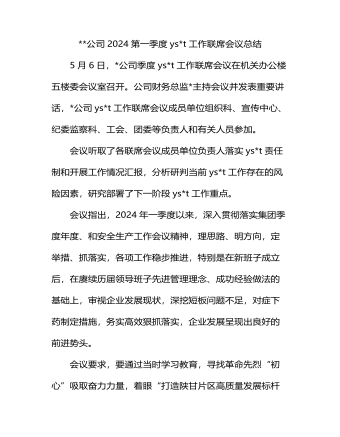
公司2024第一季度意识形态工作联席会议总结
一是要把好正确导向。严格落实主体责任,逐条逐项细化任务,层层传导压力。要抓实思想引领,把理论学习贯穿始终,全身心投入主题教育当中;把理论学习、调查研究、推动发展、检视整改等有机融合、一体推进;坚持学思用贯通、知信行统一,努力在以学铸魂、以学增智、以学正风、以学促干方面取得实实在在的成效。更加深刻领会到******主义思想的科学体系、核心要义、实践要求,进一步坚定了理想信念,锤炼了政治品格,增强了工作本领,要自觉运用的创新理论研究新情况、解决新问题,为西北矿业高质量发展作出贡献。二是要加强应急处事能力。认真组织开展好各类理论宣讲和文化活动,发挥好基层ys*t阵地作用,加强分析预警和应对处置能力,提高发现力、研判力、处置力,起到稳定和引导作用。要坚决唱响主旋律,为“打造陕甘片区高质量发展标杆矿井”、建设“七个一流”能源集团和“精优智特”新淄矿营造良好的舆论氛围。三是加强舆情的搜集及应对。加强职工群众热点问题的舆论引导,做好舆情的收集、分析和研判,把握时、度、效,重视网上和网下舆情应对。
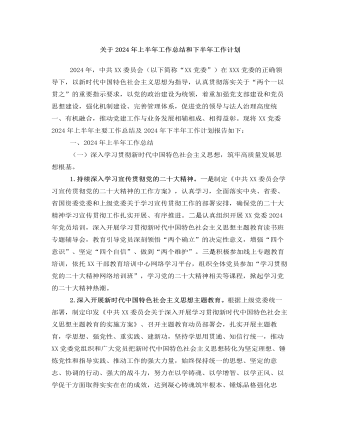
关于2024年上半年工作总结和下半年工作计划
二是深耕意识形态。加强意识形态、网络舆论阵地建设和管理,把握重大时间节点,科学分析研判意识形态领域情况,旗帜鲜明反对和抵制各种错误观点,有效防范处置风险隐患。积极响应和高效落实上级党委的决策部署,确保执行不偏向、不变通、不走样。(二)全面深化党的组织建设,锻造坚强有力的基层党组织。一是提高基层党组织建设力量。压实党建责任,从政治高度检视分析党建工作短板弱项,有针对性提出改进工作的思路和办法。持续优化党建考核评价体系。二是纵深推进基层党建,打造坚强战斗堡垒。创新实施党建工作模式,继续打造党建品牌,抓实“五强五化”党组织创建,广泛开展党员教育学习活动,以实际行动推动党建工作和经营发展目标同向、部署同步、工作同力。三是加强高素质专业化党员队伍管理。配齐配强支部党务工作者,把党务工作岗位作为培养锻炼干部的重要平台。
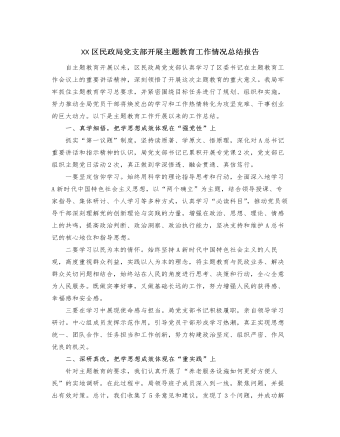
XX区民政局党支部开展主题教育工作情况总结报告
二要专注于解决问题。根据市委促进经济转型的总要求,聚焦“四个经济”和“双中心”的建设,深入了解基层科技工作、学术交流、组织建设等方面的实际情况,全面了解群众的真实需求,解决相关问题,并针对科技工作中存在的问题,采取实际措施,推动问题的实际解决。三要专注于急难愁盼问题。优化“民声热线”,推动解决一系列基层民生问题,努力将“民声热线”打造成主题教育的关键工具和展示平台。目前,“民声热线”已回应了群众的8个政策问题,并成功解决其中7个问题,真正使人民群众感受到了实质性的变化和效果。接下来,我局将继续深入学习主题教育的精神,借鉴其他单位的优秀经验和方法,以更高的要求、更严格的纪律、更实际的措施和更好的成果,不断深化主题教育的实施,展现新的风貌和活力。
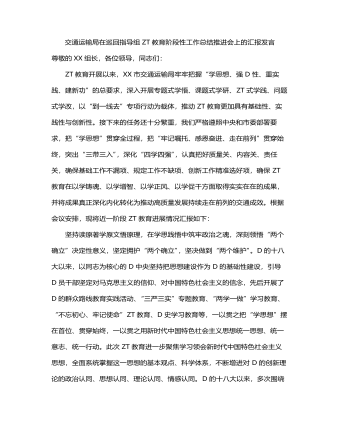
交通运输局在巡回指导组主题教育阶段性工作总结推进会上的汇报发言
今年3月,市政府出台《关于加快打造更具特色的“水运XX”的意见》,提出到2025年,“苏南运河全线达到准二级,实现2000吨级舶全天候畅行”。作为“水运XX”建设首战,谏壁闸一线闸扩容工程开工在即,但项目开工前还有许多实际问题亟需解决。结合“到一线去”专项行动,我们深入到谏壁闸一线,详细了解工程前期进展,实地察看谏壁闸周边环境和舶通航情况,不断完善施工设计方案。牢牢把握高质量发展这个首要任务,在学思践悟中开创建功之业,坚定扛起“走在前、挑大梁、多做贡献”的交通责任,奋力推动交通运输高质量发展持续走在前列。以学促干建新功,关键在推动高质量发展持续走在前列。新时代中国特色社会主义思想着重强调立足新发展阶段、贯彻新发展理念、构建新发展格局,推动高质量发展,提出了新发展阶段我国经济高质量发展要坚持的主线、重大战略目标、工作总基调和方法论等,深刻体现了这一思想的重要实践价值。
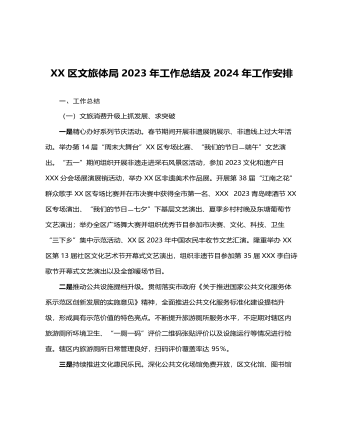
XX区文旅体局2023年工作总结 及2024年工作安排
三、2024年工作计划一是完善基层公共文化服务管理标准化模式,持续在公共文化服务精准化上探索创新,围绕群众需求,不断调整公共文化服务内容和形式,提升群众满意度。推进乡镇(街道)“114861”工程和农村文化“121616”工程,加大已开展活动的上传力度,确保年度目标任务按时保质保量完成。服务“双减”政策,持续做好校外培训机构审批工作,结合我区工作实际和文旅资源优势,进一步丰富我市义务教育阶段学生“双减”后的课外文化生活,推动“双减”政策走深走实。二是结合文旅产业融合发展示范区,全力推进全域旅游示范区创建,严格按照《国家全域旅游示范区验收标准》要求,极推动旅游产品全域布局、旅游要素全域配置、旅游设施全域优化、旅游产业全域覆盖。
今日更新Word
-

精选高中生期末评语
1、该生学习态度端正 ,能够积极配合老师 ,善于调动课堂气氛。 能够积极完成老师布置的任务。学习劲头足,听课又专注 ,做事更认 真 ,你是同学们学习的榜样。但是,成绩只代表昨天,并不能说明你 明天就一定也很优秀。所以,每个人都应该把成绩当作自己腾飞的起 点。2、 你不爱说话 ,但勤奋好学,诚实可爱;你做事踏实、认真、为 人忠厚 ,是一个品行端正、有上进心、有良好的道德修养的好学生。在学习上,积极、主动,能按时完成老师布置的作业,经过努力 ,各 科成绩都有明显进步,你有较强的思维能力和学习领悟力,学习也有 计划性,但在老师看来,你的潜力还没有完全发挥出来,学习上还要有持久的恒心和顽强的毅力。
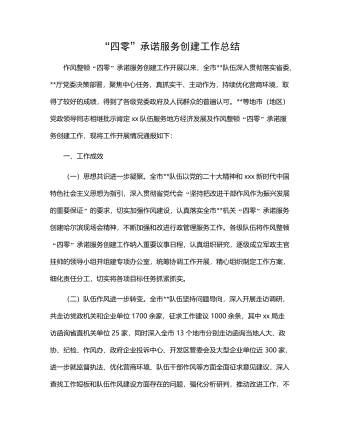
“四零”承诺服务创建工作总结
(二)坚持问题导向,持续改进工作。要继续在提高工作效率和服务质量上下功夫,积极学习借鉴其他部门及xx关于“四零”承诺服务创建工作的先进经验,同时主动查找并着力解决困扰企业和群众办事创业的难点问题。要进一步探索创新,继续优化工作流程,精简审批程序,缩短办事路径,压缩办理时限,深化政务公开,努力为企业当好“保姆”,为群众提供便利,不断适应新时代人民群众对政务服务的新需求。(三)深化内外宣传,树立良好形象。要深入挖掘并及时总结作风整顿“四零”承诺服务创建工作中形成的典型经验做法,进一步强化内部宣传与工作交流,推动全市创建工作质效整体提升。要面向社会和公众庄严承诺并积极践诺,主动接受监督,同时要依托电台、电视台、报纸及微信、微博等各类媒体大力宣传xx队伍作风整顿“四零”承诺服务创建工作成果,不断扩大社会知情面和群众知晓率。
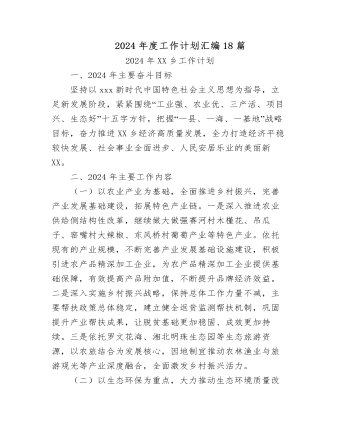
2024年度工作计划汇编(18篇)
1.市政基础设施项目5项,总建设里程2.13km,投资概算2.28亿元。其中,烔炀大道(涉铁)工程施工单位已进场,项目部基本建成,正在办理临时用地、用电及用水等相关工作;中铁佰和佰乐(巢湖)二期10KV外线工程已签订施工合同;黄麓镇健康路、纬四路新建工程均已完成清单初稿编制,亟需黄麓镇完成图审工作和健康路新建工程的前期证件办理;公安学院配套道路项目在黄麓镇完成围墙建设后即可进场施工。2.公益性建设项目6项,总建筑面积15.62万㎡,投资概算10.41亿元。其中,居巢区职业教育中心新建工程、巢湖市世纪新都小学扩建工程已完成施工、监理招标挂网,2月上旬完成全部招标工作;合肥职业技术学院大维修三期已完成招标工作,近期签订施工合同后组织进场施工;半汤疗养院净化和医用气体工程已完成招标工作;半汤疗养院智能化工程因投诉暂时中止;巢湖市中医院(中西医结合医院)新建工程正在按照既定计划推进,预计4月中下旬挂网招标。

驻村工作队2024年第一季度工作总结汇编(4篇)
三是做大做强海产品自主品牌。工作队于xx年指导成立的冬松村海产品合作社,通过与消费帮扶平台合作,在工作队各派出单位、社会团体、个人支持下,已获得逾xx万元销售额。2022年底工作队推动合作社海产品加工点扩建的工作方案已获批,待资金下拨后将正式启动扩建工作。四是积极助企纾困,带动群众增收致富。工作队利用去年建立的xx镇产业发展工作群,收集本地企业在产品销售、技术、人力、资金、运营、用地等方面的需求,并加大xx支持乡村振兴力度,xx助理赴各村委开展多场xx政策支持乡村振兴宣讲活动,本季度有x万元助农贷款获批,xx万贷款正在审批中。在壮大既有产业的同时,完善联农带农机制,一方面鼓励企业雇用本地农户就业,另一方面计划与本地农户签订长期收购合同,让农民种得放心、种得安心,带动当地群众共同致富。

主题教育总结常用提纲大全
第一,主题教育是一次思想作风的深刻洗礼,初心传统进一步得到回归。第二,主题教育是一次沉疴积弊的集中清扫,突出问题进一步得到整治。第三,主题教育是一次强化为民服务的生动实践,赤子之情进一步得到提振。第四,主题教育是一次激发创业担当的有利契机,发展层次进一步得到提升。2.第一,必须提领思想、武装思想。第二,必须聚焦问题、由表及里。第三,必须领导带头、以上率下。第四,必须务实求实、认真较真。3.一是抬高政治站位,坚持大事大抓。二是坚持思想领先,狠抓学习教育。三是突出问题导向,深入整改纠治。四是坚持领导带头,发挥表率作用。4.一是立足“早”字抓筹划。二是着眼“活”字抓学习。三是围绕“统”字抓协调。5.一是形势所需。二是任务所系。三是职责所在。四是制度所定。6.一要提升认识。二要积极作为。三要密切协作。
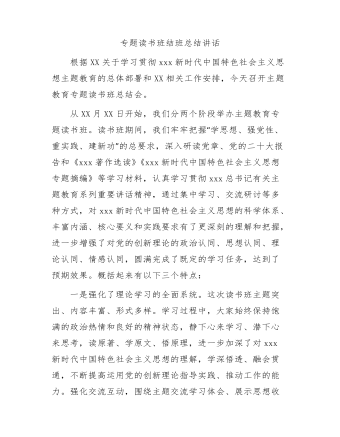
主题教育专题读书班结班总结讲话
第二,要把调查研究贯穿始终,实干担当促进发展。开展好“察实情、出实招”“破难题、促发展”“办实事、解民忧”专项行动,以强化理论学习指导发展实践,以深化调查研究推动解决发展难题。领导班子成员要每人牵头XX个课题开展调查研究,XX月底前召开调研成果交流会,集思广益研究对策措施。各部门、各单位要制定调研计划,通过座谈访谈、问卷调查、统计分析等方式开展调查研究,解决工作实际问题,帮助基层单位和客户解决实际困难。第三,要把检视问题贯穿始终,廉洁奉公树立新风。认真落实公司主题教育整改整治工作方案要求,坚持边学习、边对照、边检视、边整改,对标对表xxx新时代中国特色社会主义思想,深入查摆不足,系统梳理调查研究发现的问题、推动发展遇到的问题、群众反映强烈的问题,结合巡视巡察、审计和内外部监督检查发现的问题,形成问题清单。

















